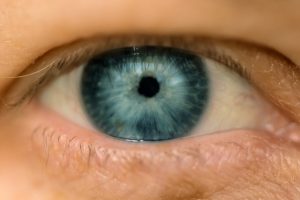Refractive Errors in the Eye

The human eye is a complex organ even when compared to other creatures around the world. Our vision is based around having a ‘camera type eye,’ an organ that focuses light through a film called the cornea, onto a light sensitive membrane called the retina. Being such an intricate and fragile body part, it is no wonder our eyes are prone to many refractive errors and health risks. That is why it is important to be aware of these conditions and the threats they pose to your vision.
What Causes Refractive Errors?
First of all, it is very important to know that refractive errors are not caused by overuse of the eye. Most issues are caused by aging or genetics. For example, the shape and size of your eye is hereditary. Extra stress on the eye could be the cause of these issues, but it is not due to overuse.
Myopia – Nearsightedness
Myopia is the most common refractive error in the eye, and is generally discovered very quickly. It is usually inherited in childhood, and resolves itself in early adulthood. Myopia is caused by either a misshapen eye or a misshapen cornea. The prevalence of this condition has nearly doubled since the 70’s. Myopia is usually very minor and can be remedied with glasses, contacts, corrective contacts, therapy, or minor surgery. However, in rare cases Myopia can become degenerative. This poses potentially serious health risks and should be treated immediately.
Hyperopia – Farsightedness
While not as common as Myopia, Hyperopia develops in children and tends to lessen in adulthood. Hyperopia also tends to affect people differently, hindering their near site as well as far sight sometimes. It commonly occurs when the eyeball is too short, or if the retina is too straight. Similar to Myopia, Hyperopia is also genetic but only effects about ten percent of Americans. Treatments include eyeglasses, contacts, corrective lenses, and refractive surgery.
Presbyopia – Old Eye
The word Presbyopia is a literal translation of the word for ‘Old Eye’ in Greek, and it is a natural refractive error of the eye that comes with aging. Around the age of 40 your clear lens, located just behind the iris, becomes more rigid and less flexible making it harder to focus light onto the retina. Presbyopia is corrected with glasses, contacts, or surgery.
Astigmatism
Astigmatism is a result of asymmetric curvature in the cornea, or lens of the eye. Most people have astigmatism to some level, but it has no effect on vision. When it does effect vision the result is blurry at all distances. The cause for this refractive error is unknown however, it is hereditary like most other errors and can increase or decrease overtime. Eyeglasses and contact lenses are available to treat astigmatism as well as a procedure called orthokeratology. Orthokeratology has the patient wear a series of contacts designed to reshape the cornea or lens.
A refractive error is a very common occurrence and can be diagnosed easily during a routine checkup. Just make sure to visit your optometrist regularly to avoid letting the condition get out of hand.









 powerhousegroup.net
powerhousegroup.net